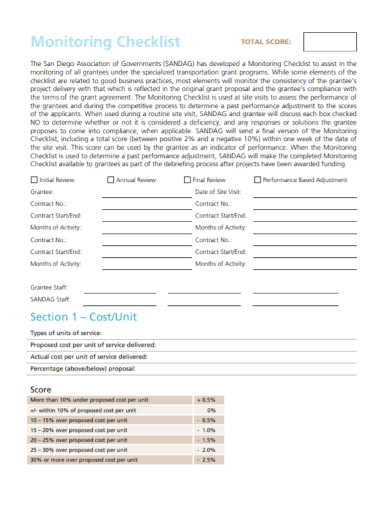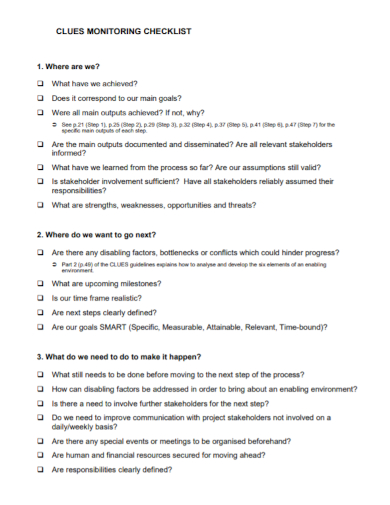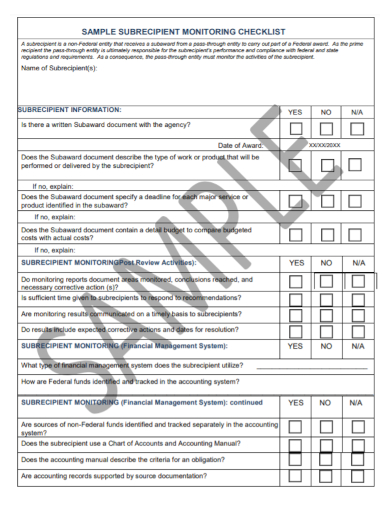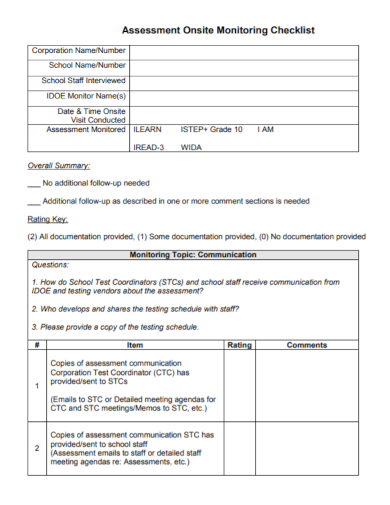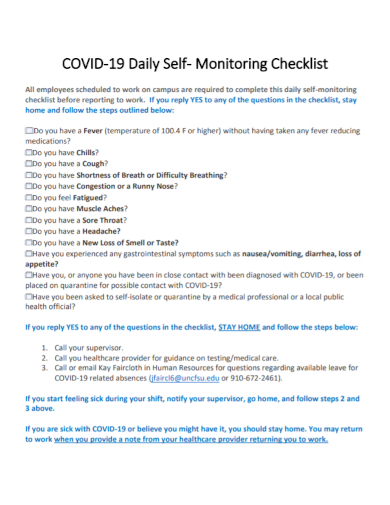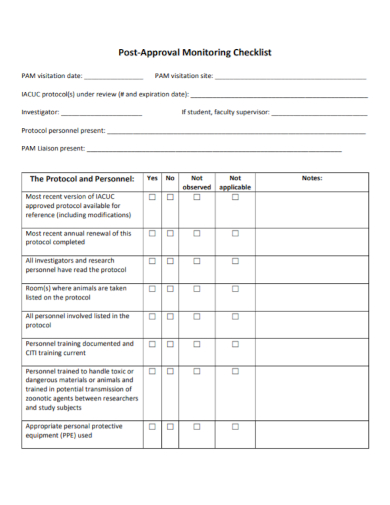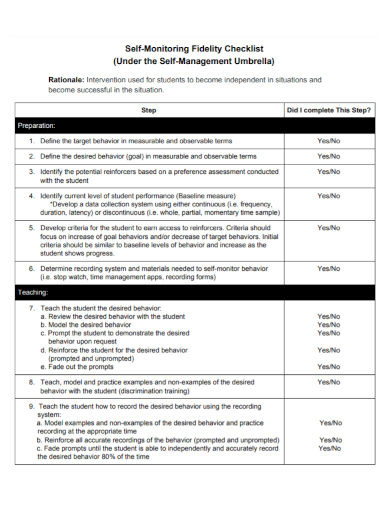It is mostly required for every companies to comply with the regular observation and recording of their project activities. This would allow them to check the progress and make sure that the output or result that they want will be achieved. Monitoring has been one of the most important tool in the planning process and should be a part of the community-led approach. Monitoring does not only require you to work with complicated monitoring processes. It is quite enough to go through the checklist after each of the planning steps. Also, you may want to consider asking this questions: “where are we?”, “where do we want to go next?”, and “what do we need to make it happen?”
10+ Monitoring Checklist Samples
1. Monitoring Checklist
2. Clues Monitoring Checklist
A situation analysis should be done by having to conduct monitoring review meetings. You may have the opportunity to have it after a particular workshop where you are going to involve some key stakeholders. This type of monitoring approach enables the distribution of information with regards to the planning progress and the problems that you have encountered. If it will be done in a very transparent manner, it will help strengthening the involvement of the community where they will be focusing mainly on an open evaluation that is appropriate within the nature of a local context. Through this, the community might be encouraged to initiate in the adjustment of the process if needed.
3. Subrecipient Monitoring Checklist
4. Assessment Onsite Monitoring Checklist
5. Daily Self-Monitoring Checklist
6. Hospital Compliance Monitoring Checklist
7. Provider Monitoring Checklist
8. Post Approval Monitoring Checklist
9. Self-Monitoring Fidelity Checklist
10. Quality Monitoring Checklist
11. Sample Monitoring Checklist
Steps to Successful Monitoring
It is of great importance that you will have the opportunity to learn about the positive benefits of monitoring. Below are the five (5) outlined key steps to achieve a successful monitoring.
- Define a monitoring project plan – it is always important to know that you should always make a plan for the implementation process. The plan should be realistic and is based on an objective that will clearly define your expectations within the team. The objectives must be able to present an outline of the assets that will be used for monitoring. In order to increase the chances of having a successful adoption, make sure that you have already secured an effective plan for your implementation that will encourage you to allow areas of communication within the team.
- Review your capabilities and the needed requirements – in order to have a successful monitoring, you have to work with your team to identify if you will be provided with the data that you wish to acquire. Depending on your choice, there are still other types of technical aspects and application requirements that you might want to consider.
- Consider having a data collection plan – when you have defined the data items that you want to collect, you will eventually know how it should be analyzed, thus allowing your team to understand the process of deploying your monitoring efforts. You must have to complete an equipment inventory to which you will be needed in acquiring the data and outlining their technical attributes.
- Develop a strategy – always make sure that your team is properly aligned with the objectives and the defined expectations. The strategy should be team-focused, following a specific outline on how you are going to monitor, collect a data, analyzed and communicated. Always be clear with how the data influence the internal relationships.
- Try to evaluate and tweak configurations – during this process, it would be necessary to prepare various questions that encourages you to better understand a specific data, its accuracy and how you are going to form a conclusion out of it. Make sure to focus on the incremental improvements that would fit to your team.
FAQs
What are monitoring indicators?
The performance indicators are the measures that involves the context of input and output, impact, and outcomes thatt will be used in monitoring during a project implementation.
What is the purpose of monitoring in assessment process?
Monitoring provides information to assess a particular project effect and their impacts. It also helps in determining whether the objectives are met.
What is the main purpose of a checklist?
A checklist helps in reducing failure by ensuring the consistency and completeness in carrying out a specific task.
If you want to see more samples and format, try to check some of the monitoring checklist samples and templates in the article to be guided.
Related Posts
FREE 20+ Monthly Checklist Samples
FREE 19+ Quality Checklist Samples
FREE 19+ Sample BMI Index Chart
FREE 15+ HR Checklist Samples
FREE 12+ Control Checklist Samples
FREE 11+ Technology Roadmap Samples
FREE 10+ Sample Risk Assessment Checklist
FREE 9+ Quarterly Report Samples
FREE 8+ Food Inventory Samples
FREE 6+ Pre-Employment Checklist Samples
FREE 19+ Onboarding Checklist Samples
FREE 12+ Rental Inventory Templates
FREE 12+ Office Maintenance Schedule Samples
FREE 10+ Sample Network Assessment
FREE 9+ Sample Key Log

